Q&A: WRAL’s Pete Sockett on ATSC 3.0 Broadcasting
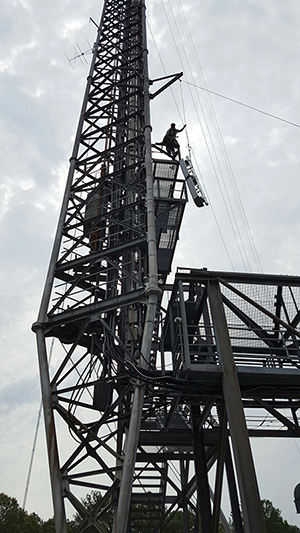
WRAL’s new antenna for broadcasting
in ATSC 3.0 on Channel 39.RALEIGH, N.C.—WRAL, the NBC affiliate in Raleigh-Durham owned by TV pioneer Capitol Broadcasting Co., started transmitting high dynamic range 4K content over an ATSC 3.0 signal in late June. ATSC 3.0 is the broadcast TV transmission standard now in development at the Advanced Television Systems Committee that promises the type of features and functionality available via broadband, as well as handling 4K and other advanced video and audio features.
Here, Pete Sockett, director of engineering and operations for WRAL, answers some crowd-sourced questions about the 3.0 broadcast and how the station intends to transition to the format. He opened by giving a shout-out to WRAL’s equipment suppliers, including ERI, GatesAir, Harmonic, Keepixo, LG Electronics, Meintel, Sgrignoli & Wallace, Monroe Electronics and Triveni Digital.
Sockett:I’d like to start by thanking all of our vendor partners that have held our hand through all of this, and the ATSC TG-3 membership as a whole. All we’ve done here in Raleigh is pull together the sum of everyone’s work. Thank you to all.
TV Technology: What have you learned so far?
Sockett: That this is still truly a science fair experiment. There are so many moving parts that are still up in the air, and that there are so many people in the ATSC that are far smarter than I will ever be! Also, it’s been pleasantly surprising to me how many of “IP-based” tools that we’ve been using for years are useful in 3.0 (i.e. Wireshark, VLC etc.).
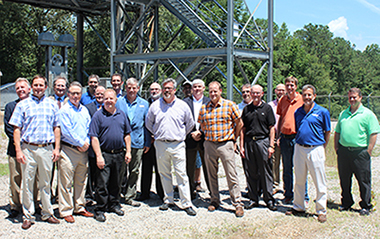
WRAL’s “Channel 39 Club,” the team that helped
light up the ATSC 3.0 broadcast on Channel 39.
TV Technology: Will you continue to broadcast this signal full time?
Sockett: Absolutely.
TV Technology: How does the coverage area of the experimental signal compare to the station’s primary signal coverage area?
Sockett: Not sure yet… we don’t have a portable demodulator to be able to perform any tests. We are currently working on a plan to get one, but that’s a few weeks out. For what it’s worth, the RF waveform on a spectrum analyzer looks very promising so far!
TV Technology: Describe the physical system configuration and how it's laid out in your facility. What did you have to add?
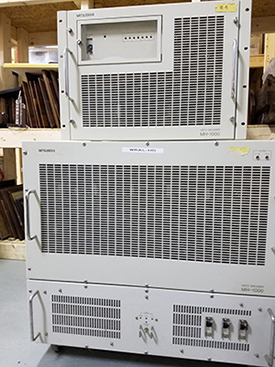
WRAL’s circa 1996 encoder/decoder.
Sockett: We had to add most everything. Currently it’s all located at the transmitter site.
We convert WRAL to 1080p (Teranex)
HVEC encoder (Harmonic)
Route Encoder (Keepixo)
Signaling and Announcement and Route Encoding (Triveni)
Exciter and transmitter (Gates Air)
Mask filter and Antenna – (Electronics Research Inc), and…
We borrowed a TV with the ATSC 3.0 Receiver from LG
TV Technology: Will you do native SDR and convert or HDR and down convert to SDR? Using what method?
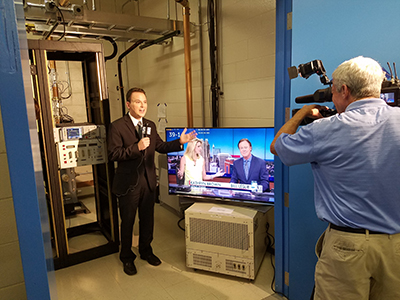
WRAL camera operator Terry Cantrell doing a live shot
with anchor Brian Shrader on the ground-breaking broadcast.Sockett: It’s too early to tell for sure, there is still a lot to learn in this arena. My gut tells me that we will ultimately produce everything in HDR and create the best pictures possible.
TV Technology: Which HDR format did you use and why?
Sockett: HDR-10. Two summers ago, when we shot the “Take Me Out to the Bulls Game” documentary, we recorded in Sony RAW / S-LOG3 (before you ask, it was shot on a Sony F55). So to prepare for airing this time, we graded it to 1,000 nits. The Harmonic encoder could signal the HDR 10 in the SEI metadata. We got lucky on that part.
TV Technology: What audio format are you using, AC-4 or MPEG-H AA?
Sockett: We started with AC-4, but realized the LG set needed AAC, so we switched modes. Long term, we will follow the ATSC recommendation for AC-4.
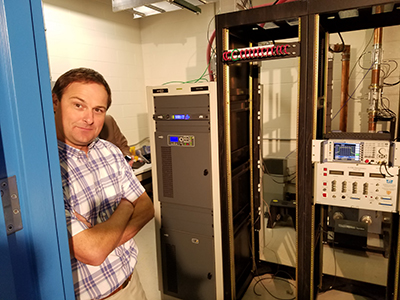
Jim Goodmon, Jr., vice president and general manager
of Capitol Broadcasting Co.
TV Technology: What encoder is being used?
Sockett: Harmonic Vibe 4k
TV Technology: What was the transmitted bit rate, did the WRAL test/demo involve LDM?
Sockett: Approximately 25Mbps. We did not do any LDM testing.
TV Technology: Is there any part of the ATSC 3.0 standard that is not finished that is affecting how you conduct the experimental broadcasts?
Sockett: No yet, we are still crawling before we run, so we haven’t hit any limits so far.
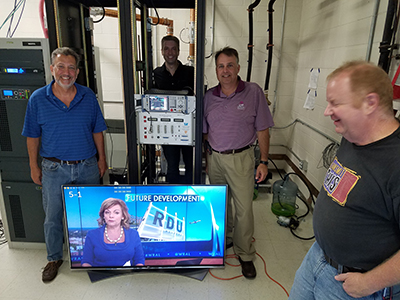
Members of WRAL’s Channel 39 Club, l to r: Dave Catapano of Triveni,
Nick Paulin of ERI, Joe Seccia of GatesAir and Matt Brandes of WRAL.
TV Technology: WRAL is using an experimental license to broadcast this signal on Ch. 39. Will you be able to learn anything that will help create the framework for simulcasting?
Sockett: We expect to learn a lot! Of course our friends at Sinclair are blazing that trail for all of us as we speak!
TV Technology: Are you intending to do live production and what camera would you use?
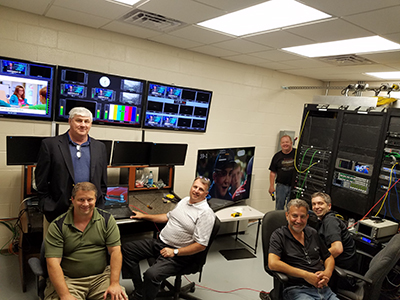
More members of WRAL’s Channel 39 Club, l to r: Mark Voorhees of
GatesAir, Mike Mory of WRAL, Joe Seccia of GatesAir, Dave Catapao
of Triveni, Sean Devine of Triveni and Matt Brandes (in the back), WRALSockett: I assume you mean in UHD? If so, yes, but not sure when...
TV Technology: What is WRAL’s plan for procuring additional receivers?
Sockett: We are currently working with a couple of vendors on that. In reality, time will take care of it.
TV Technology: Does the station have any other 4K content that it intends to broadcast? Can it do a 4K news broadcast or other station-generated content?
Sockett: We plan on airing the NBC 4K content from the Olympics… We’re very excited about that!
Long term, we have been producing a local show, “Out and About,” in 4K-SDR since January of this year, and will be producing all new WRAL documentaries in 4K HDR going forward.
TV Technology: Does WRAL expect any visits from the FCC or congress to see how the system works?
Sockett: No plans currently, but they are always more than welcome to come visit. We’d love to show them this great new technology!
TV Technology: How and when do you plan to make the transition from ATSC 1.0 to 3.0? Is WRAL exploring channel-sharing as a transition option?
Sockett: We will begin the transition as soon as it makes sense to do so. Of course will evaluate all options to make sure it goes as smooth as possible.
For more, check our ATSC 3.0 silo.
Also see…
July 26, 2016
“Transmitter Sites: Things to Consider for ATSC 3.0”
Many stations will replace transmitters, RF systems, line and antennas as part of the channel repack after the incentive auction and it makes sense to select gear that will work for ATSC 3.0.
July 20, 2016
“20 Years Later, WRAL Is Still a Broadcast Pioneer”
The year 1996 was a landmark one for broadcasters in the United States. In that year, the federal government revamped the rules governing the industry with the Telecommunications Act of 1996. It was also the year that the HDTV era was launched in the United States when WRAL-TV in Raleigh, N.C. commenced HDTV broadcasts in July; and it concluded with the FCC’s approval of the ATSC DTV standard at the end of the year.
July 13, 2016
“ATSC 3.0 Document Status”
ATSC 3.0 will be a suite of about 20 separate standards
June 29, 2016
“WRAL Lights Up ATSC 3.0 4K Signal”
WRAL-TV plans to use it to provide a deep offering of on-demand content, access to multiple sources of video to enhance linear viewing, and a number of other 24/7 streams of TV and radio programming, representing the marriage of broadcasting and broadband.
Get the TV Tech Newsletter
The professional video industry's #1 source for news, trends and product and tech information. Sign up below.
